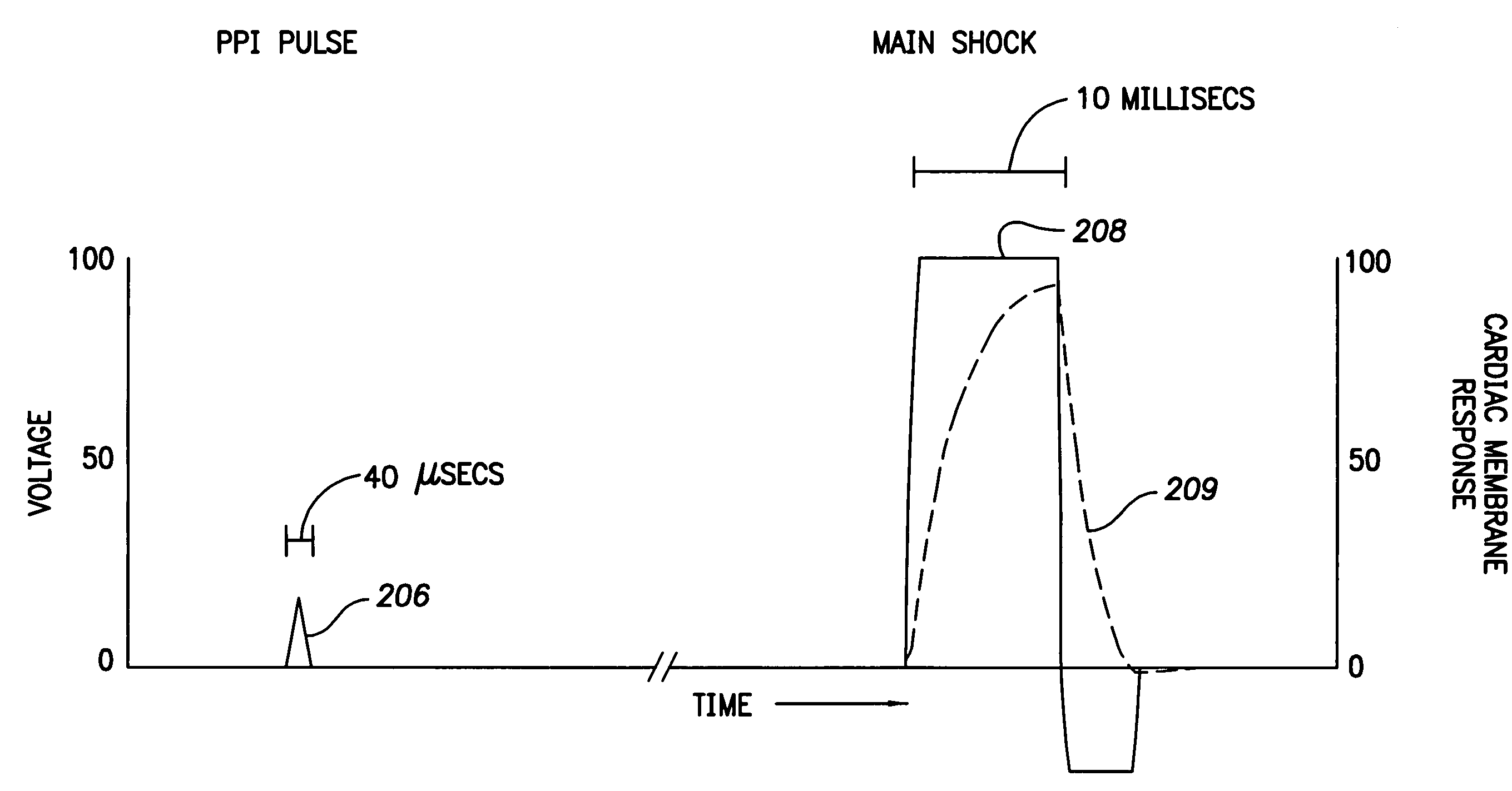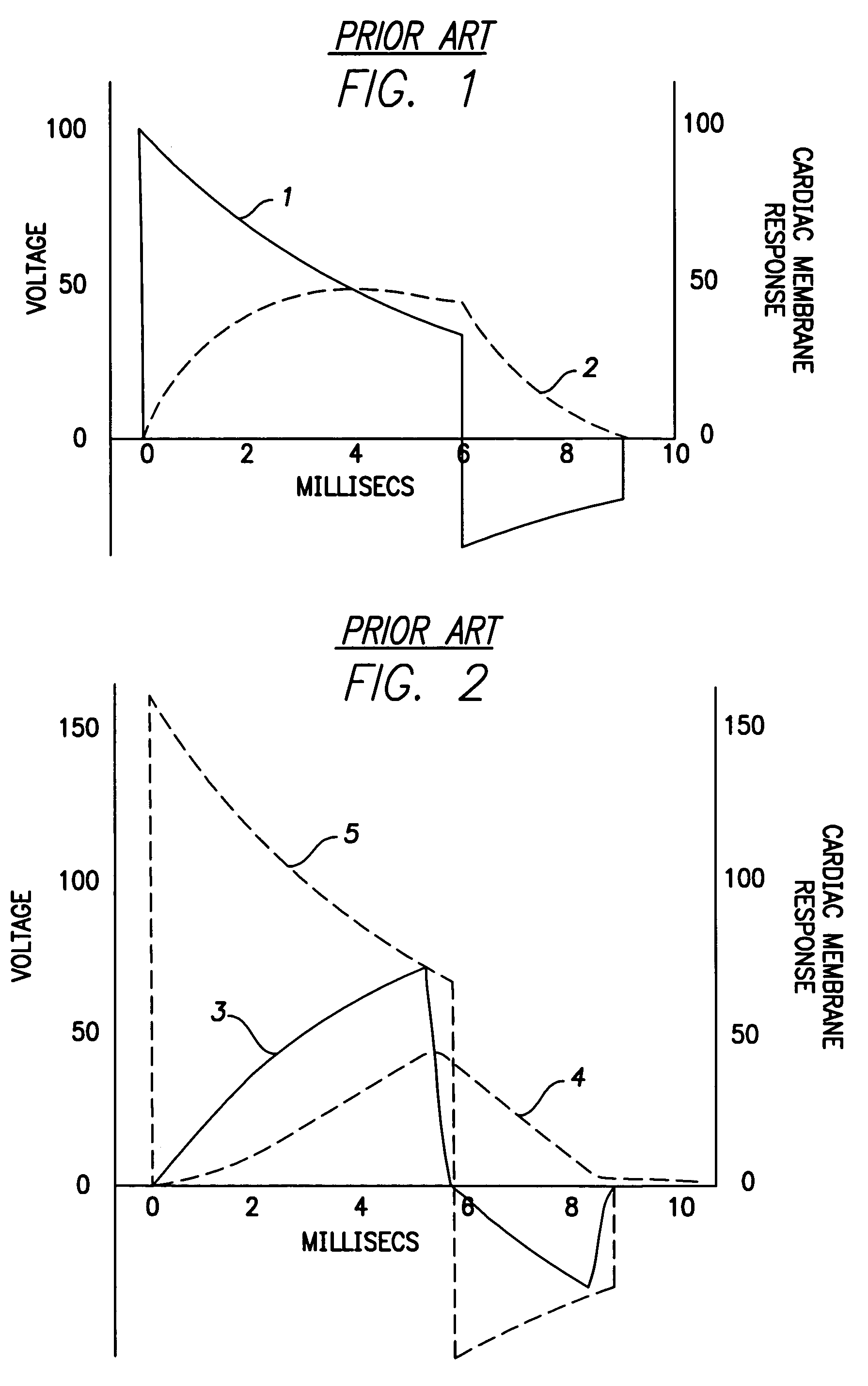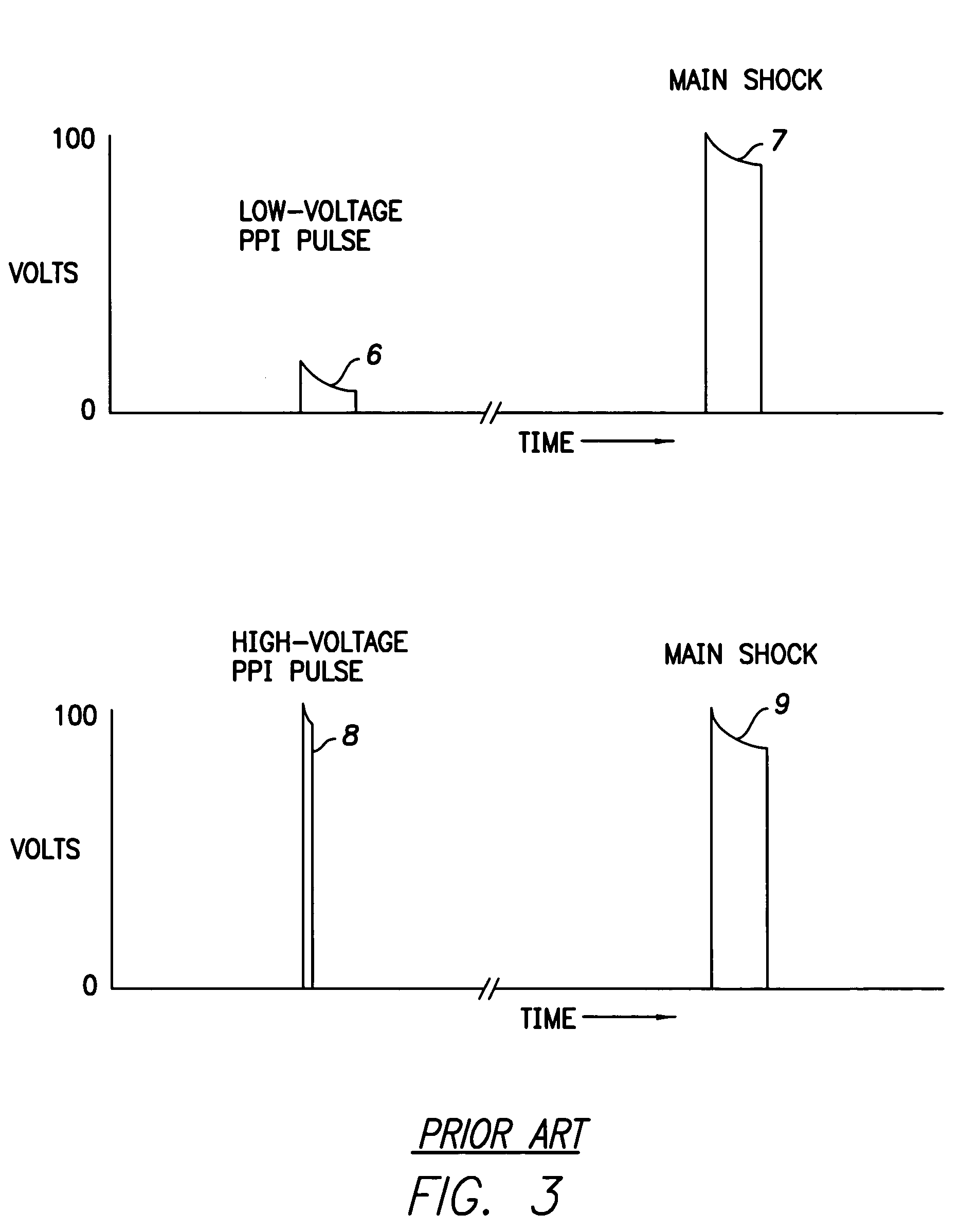System and method for reducing pain associated with cardioversion shocks generated by implantable cardiac stimulation devices
a cardiac stimulation device and implantable technology, applied in the field of implantable cardiac stimulation devices, can solve the problems of reducing the flow of blood throughout the body, reducing the general conduction of blood into the ventricles of the heart, and long-term health problems, and achieve the effect of reducing pain
- Summary
- Abstract
- Description
- Claims
- Application Information
AI Technical Summary
Benefits of technology
Problems solved by technology
Method used
Image
Examples
Embodiment Construction
[0029]The following description includes the best mode presently contemplated for practicing the invention. The description is not to be taken in a limiting sense but is made merely for the purpose of describing the general principles of the disclosed embodiments. The scope of the invention should be ascertained with reference to the issued claims. In the description that follows, like numerals or reference designators will be used to refer to like parts or elements throughout.
[0030]An overview of an implantable device configured to implement the invention is first provided with reference to FIGS. 4–5, then the techniques and circuits of the invention are described in greater detail with reference to FIGS. 6–10.
[0031]Overview of Implantable Device
[0032]FIG. 4 illustrates a stimulation device 10 in electrical communication with the heart 12 of a patient by way of three leads, 20, 24 and 30, suitable for delivering multi-chamber stimulation and shock therapy. To sense atrial cardiac s...
PUM
 Login to View More
Login to View More Abstract
Description
Claims
Application Information
 Login to View More
Login to View More - R&D
- Intellectual Property
- Life Sciences
- Materials
- Tech Scout
- Unparalleled Data Quality
- Higher Quality Content
- 60% Fewer Hallucinations
Browse by: Latest US Patents, China's latest patents, Technical Efficacy Thesaurus, Application Domain, Technology Topic, Popular Technical Reports.
© 2025 PatSnap. All rights reserved.Legal|Privacy policy|Modern Slavery Act Transparency Statement|Sitemap|About US| Contact US: help@patsnap.com



